If you were a student who found studying Science, Maths or English a painful experience or you never could quite “get” these subjects, don’t feel bad or think you’re stupid.
According to creativity expert Sir Ken Robinson – it’s not your fault.
The school system failed you.
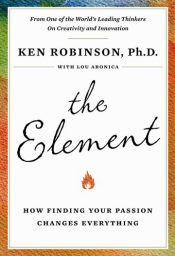 In his book, “The Element”, Robinson argues that the school system is broken. It has succeeded in educating many people out of their creativity and producing a clear set of “winners” and “losers”.
In his book, “The Element”, Robinson argues that the school system is broken. It has succeeded in educating many people out of their creativity and producing a clear set of “winners” and “losers”.
The “winners” are the academic students who end up becoming university professors.
The “losers” are the students who are talented and creative but think they’re not. Why? Because what they’re good at was never recognised or valued in school.
As it turns out many wildly successful people, such as artists Chuck Close and George Harrison, struggled at school. Robinson states –
“Some of the most brilliant, creative people I know did not do well at school. Many of them didn’t really discover what they could do—and who they really were—until they’d left school and recovered from their education”.
Robinson makes the case that the modern day school system values certain subjects such as maths and languages more than creative areas such as music, dance and art.
This in turn shapes how we perceive intelligence – being good at maths and literacy. With such a narrow view of intelligence it’s no wonder that so many students think that they’re stupid.
A large part of the book focuses on the importance of finding your element (i.e. what you love doing and what you’re good at).
How can you possibly know when you’ve found your element?
A good sign is “complete absorption in an activity…concentration on the task at hand that allows one to forget everything else” Robinson states. The activity should be intrinsically rewarding and give you an incredible amount of energy.
He encourages us to take risks and step out of our comfort zones, find our element and pursue it. He also offers some practical advice on how to go about doing this and what to expect. In a nutshell –
• Find your tribe – Surround yourself with people who love what you love. This can help to provide inspiration, support and feedback.
• Get a mentor – In searching for your element it helps to have the guidance of a mentor. Mentors can give us advice and techniques, push us past what we see as our limits, don’t allow us to succumb to self-doubt and encourage us to make the most of our capacities. Most importantly “they open our eyes to new possibilities and fire our aspirations”.
• Be prepared for some backlash – When you choose to do what you love, as opposed to settling for a socially acceptable job, don’t expect everyone to be overjoyed and completely supportive. There will be people in your family and circle of friends who don’t approve. Ignore them.
 Robinson tells the story of Paulo Coelho (author of the International bestseller The Alchemist). As a young man Paulo’s parents wanted him to practice Law however Paulo had a deep desire to be a writer. Unfortunately, his parents couldn’t accept this. In an act of desperation, they put Paulo in a psychiatric institution where he received electroshock treatment. All in the name of love.
Robinson tells the story of Paulo Coelho (author of the International bestseller The Alchemist). As a young man Paulo’s parents wanted him to practice Law however Paulo had a deep desire to be a writer. Unfortunately, his parents couldn’t accept this. In an act of desperation, they put Paulo in a psychiatric institution where he received electroshock treatment. All in the name of love.
Chances are you won’t have to face a straight jacket and a padded room but prepare yourself for people who may try to clip your wings.
The most powerful part of the book for me was the afterword. Ken Robinson warns readers that on our journey to find what we love doing we must recognise that we live in a fragile ecosystem that has limits. Whatever we do to the planet ultimately impacts on our quality of life and wellbeing.
In the last few decades, humans have accomplished some amazing things – a man on the moon, the internet, iPads, 3D televisions, etc. Yet despite these achievements, many of us aren’t satisfied and are driven to create more and more.
“But there is a danger now that our imaginations may be failing us. We have seen far, but not far enough. We still think too narrowly and too closely about ourselves as individuals and as a species and too little about the consequences of our actions” he states.
After reading this book what I am left with is the importance of pursuing what you love without jeopardising the planet such that our children have the opportunity to do the same.
References
Robinson, Ken & Aronica, Lou. (2009). The Element: How Finding Your Passion Changes Everything. Penguin Books: London, England.
Ted Talk – Ken Robinson says Schools Kill Creativity
Share This:

This is no accident. This is a deliberate design decision.
It’s the same reason why fast food logos are often warm reds, yellows, and orange tones. These colours jump out at us. They create a sense of excitement and urgency.
In his book Drunk Tank Pink, Dr Adam Alter argues colour is a hidden force in our lives that can shape the way we think, feel, and behave.
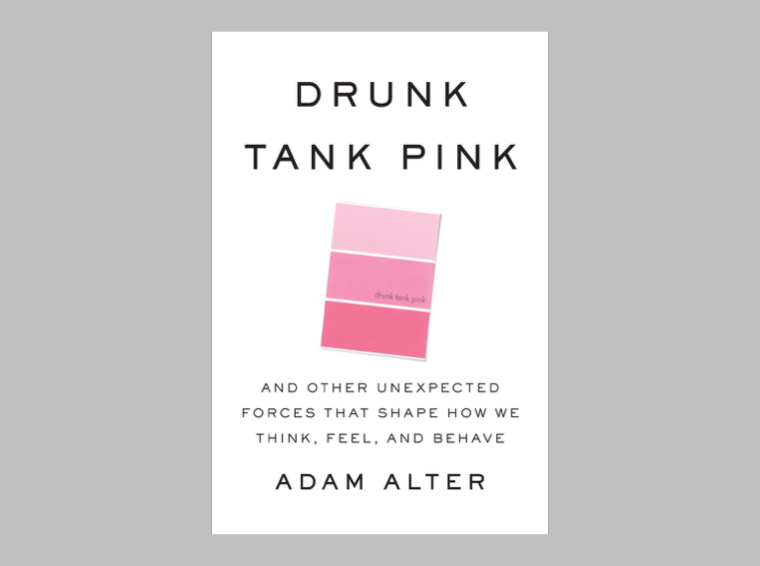
In this blog, I’m going to explore how you can use colour as a tool to help you study more effectively and keep your brain focused and engaged on the task at hand.
There is whole field of research dedicated to exploring the impact of different colours.
One fascinating study looked at the impact of a particular tone of pink (Baker-Miller Pink/Drunk Tank Pink) that appeared to sap people of their energy. Researcher Dr Alexander Schauss found staring at this shade of pink could lower people’s heart rate and pulse compared to staring at other colours.
A 7-month trial was conducted in which prison confinement cells were painted in this pink shade. According to Dr Schauss, when people were exposed for just 15 minutes to this pink colour in their prison cell, it made them more relaxed, less aggressive, and reduced the incidence of violent behaviour.

But before you race off to the hardware store to buy a tin of pink paint, you need to understand a few simple things about the psychology of colour.
The research suggests that colour can act as a powerful trigger. It can cue different emotions, thoughts, and behaviours. For instance, when you see a red Stop Sign or light, this captures your attention.
But how we react to colour also comes down to personal preference and particular contexts. Colour can have different meanings in different contexts (e.g., on Valentine’s Day red generally symbolises romance rather than “Danger! Look out!”).
The bottom line is this: when it comes to colour you need to experiment to see what works for you.
Colour can evoke particular states (e.g., a state of calm or alertness). It can also perk up your brain and transform a dry, boring subject into something that’s a little bit more novel and interesting for your brain.
Below I share 9 ways you can use colour to study and work more effectively.
There’s something about a brightly coloured post-it note that captures our attention. This is why I love using post-it notes to help focus my mind and stay on track.
On a post-it note, I create a list of no more than three things that I need to do. Once I’ve completed those tasks, I scrunch up the post-it and throw it in the bin. This action feels surprisingly satisfying! I’ll then grab a fresh post-it note (often in a different colour) to create a new list.
If I’m not sure how to get started with a task (e.g., Task: Write blog post on colour), I’ll grab another post-it note and I’ll scribble down the first tiny action I can take to kick-start the process (e.g., Tiny action: Open Word document).
If you have trouble finding your study materials for each subject and they all look the same or are scattered all over the house, you can use colour to make it easier for you to find what you need.
Try assigning a particular colour to a subject. This makes it easier to stay organised and identify your materials. At home, I assign a light blue to my exercise files and folders. When it’s time to plan my workout for the day, I look for my light blue files and folders.
A simple and cheap way to colour code your materials without investing in brand new stationery is to gather a collection of paint swatches from your local hardware store. You can repurpose these as labels by cutting them into smaller sections and sticking them on your files, notebooks, etc.
Testing yourself with flashcards is a highly effective way to study for a test and/or exam. You can create your own flashcard decks by purchasing index cards in a range of different colours.
Try assigning certain colours to different subjects. Alternatively, you can simply pick a colour you want to work with depending on how you feel.
There are no hard and fast rules. Feel free to mix up your flashcard colours to keep things fresh for your brain.

Creating a mind map on a topic is a simple way to combat study fatigue and inject a little colour and creativity into your study sessions.
Although using different coloured pens isn’t absolutely essential for mind mapping, it’s well worth doing. I use different colours to create the different branches on my mind maps.
I have dozens of colourful mind maps at home. Despite my lack of drawing skills, these mind maps look great and are fun to review primarily due to the different coloured branches.
It’s important that you feel good in your study environment. If you feel good in your study space, you’re more likely to sit down and study there.
I’ve decorated my workspace by putting up colourful posters, inspiring and funny pictures, and artwork on my walls.
If you don’t have access to artwork/posters, you can print out colourful pictures and quotes of things that make you feel good. The addition of a few indoor plants can also help to liven up your space as well as purify the air.
Fluorescent highlighters feel really good to use. It can feel both fun and satisfying to strike things off your to-do list. You can also use these pens to time block different tasks/events in your diary and draw your attention to important tasks that you need to do.
Word of warning: When it comes to studying for a test or exam, I don’t recommend highlighting your books and/or notes as a way to learn. I know it feels good but research shows it’s an ineffective way to learn.

Red pen is often associated with failure and criticism. This is why seeing a teacher’s comments scribbled in red pen can trigger negative emotions in many of us.
Generally, we don’t like reading comments written by others in red pen. It feels nasty! But it turns out if you use a red pen to correct your own work, this can help you to pick up more errors.
Dr Adam Alter discusses one study that looked at the difference between using a blue pen and a red pen to correct an essay. Students who used a blue pen picked up on average 19 errors. In contrast, students using a red pen picked up an average of 24 errors.
But using a red pen has its limitations! If you are trying to solve a problem or taking a test, using a red pen can backfire by activating ‘avoidance motivation’. This is a distracting state of mind that can impair a student’s ability to solve problems and increase stress levels.
As a rule of thumb, use a blue or black pen when solving problems and taking tests. But when you need to cast a more critical eye on your work (e.g., in the proofreading phase), switch to using a red pen.
A lot of us use our phones as an easy way to escape from the boredom and discomfort we experience when doing our work. The apps on our phones are like candy. They are designed to be highly addictive and hijack our attention.
This is where you can be strategic with how you use colour: you can make your phone look more like a tool (and less like a toy) by turning on greyscale mode.
Viewing your phone in greyscale is a completely different experience to using it in full-colour mode. As a year 8 student recently shared with me:
“When I made my phone greyscale, it made it really boring to use.”
Try it and see for yourself!
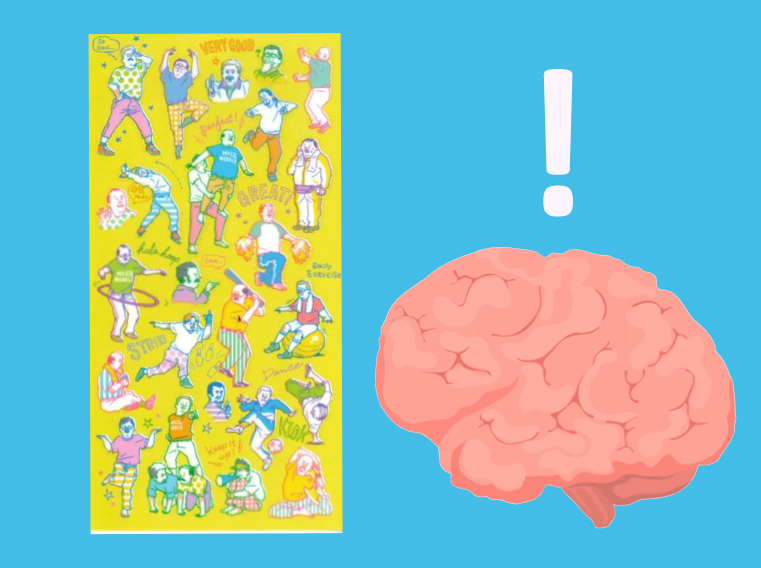
This strategy may seem juvenile. If it reminds you of being back in primary school and receiving gold stars, hear me out.
Too often we don’t stop to acknowledge and appreciate ourselves for accomplishing tasks. We finish one thing and we immediately shift our focus to the next task on our to-do list.
When you work this way, your work routine can quickly become soul destroying and your motivation can take a dive.
This is why every so often I pull out my fun stamps and colourful sheets of stickers. After completing a task, I pause and acknowledge what I’ve done by giving myself a stamp or a fun sticker. It’s a little celebration.
For some reason, my brain responds particularly well to quirky Japanese stickers featuring ogisan (Japanese grandfathers) exercising. We’re all different, so explore what stamps and stickers work for you.
Colours are lot of fun! Incorporating a little more colour into your studies and work life can take things to the next level and perk up your brain when it needs a little motivational boost.
But the colours that I like may not be the colours that you like. Your colour preferences may also vary from day to day. Notice the colours that make you feel good and have fun seeing how you can incorporate them into your study sessions.
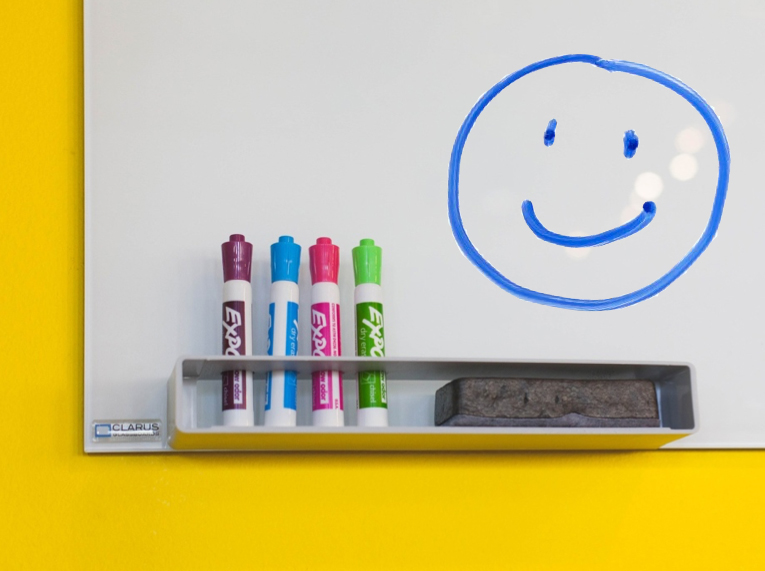
Take a tour of my home and you’ll see whiteboards in my office, dining room, bedroom and kitchen.
These whiteboards, covered in scribbled text and bad drawings, make my house look a little quirky. But upon closer inspection, you’ll see that these whiteboards help me to work my way through the chaos and confusion of life.
Here are a few ideas on how you can use a whiteboard to make life a little easier for yourself:
If you’re a perfectionist like myself, a large whiteboard is a great tool to decrease anxiety and overwhelm surrounding big projects.
Afraid of making a mistake? Stress less!
With one swipe of a cloth, you can wipe away any ideas you don’t like. So don’t hold back. Make a mess. Make a start.
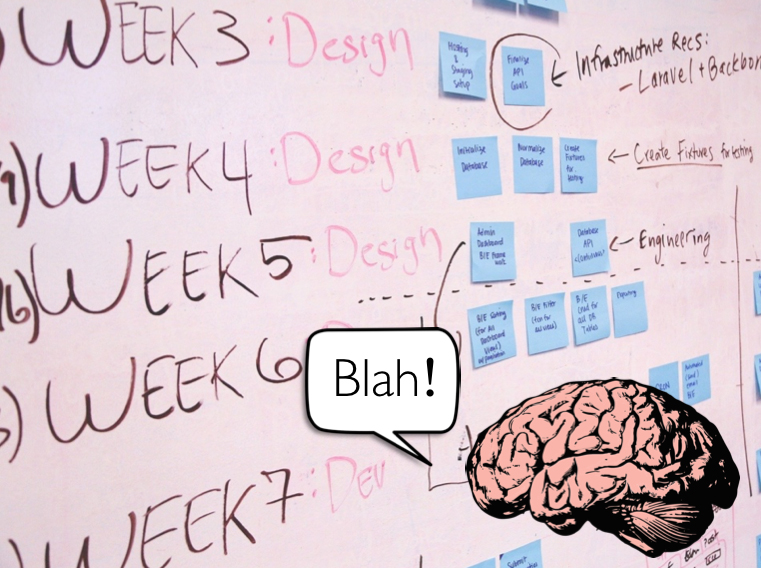
Have a lot going on in your life? I know this feeling all too well.
Most of us go through the day with lots of random thoughts swirling inside our heads. Unless we capture these thoughts, they can take up precious mental space and deplete our brainpower.
When I’m feeling overwhelmed, in order to reset and feel more in control, I stand up, head over to the closest whiteboard and I spend a few minutes scribbling out all the things that are on my mind. These things usually include:
• People to call and/or email
• Deadlines for projects
• Conversations to have with people
• Ideas for future projects
• Little irritants (things that are bugging me)
• Things I need to buy (usually food)
There’s something really powerful about getting your thoughts out of your head and onto a whiteboard. Try it and see how you feel after a brain dump session.
How can a whiteboard help you ace your exams?
Two words: active recall.
According to cognitive psychology, active recall (also known as retrieval practice) is the number one way to retain information. Research shows it’s a much more effective way to study than rereading your books or highlighting your notes.
Here’s how you can do a quick active recall session with a whiteboard:
1. Grab your whiteboard markers and a copy of your syllabus.
2. Flip straight to the unit content section.
3. Now choose a syllabus point.
4. Set a timer for 5 minutes.
5. Without looking at your notes or books, write and/or draw as much as you can remember on that syllabus point.
6. When the timer goes off, check to see how much you recalled correctly and where the gaps in your knowledge are.
7. Got something wrong or missed an important bit of information? Grab a different coloured pen and write that stuff down.
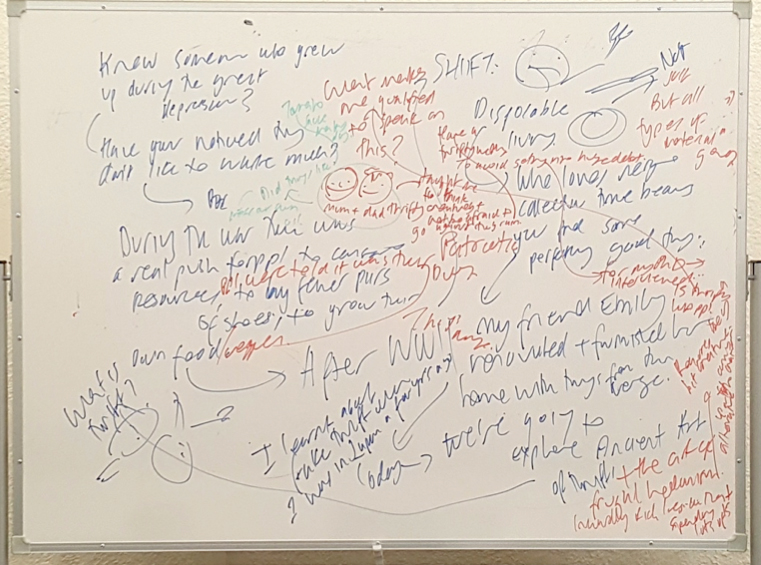
If you need to learn a presentation in a short period of time, I highly recommend doing active recall on a whiteboard.
This is how I learn all my presentations in a short period of time. I set a timer for 25 minutes and do an active recall session (I can’t stop until the timer goes off).
These sessions don’t look pretty (see example above) but it doesn’t matter. What matters is the process of seeing how the content flows, bringing the information to mind and identifying the gaps in my knowledge.
Need to start working on a big project? Find yourself procrastinating? Use a whiteboard to break down that big scary projects into bite size chunks. Set a timer for 3-5 minutes and map out all the tasks that you need to do.
When the timer goes off, pick a different coloured pen and write down the first small action you can take to make a start.
If this task is still too scary for your brain, break it down again (write down an even smaller starter step). Continue breaking the task down until the task is so small that it’s not scary or overwhelming for your brain.
Create a simple to-do list on your whiteboard. After you complete each task, look at your whiteboard and strike a line through it, give it a tick or wipe it out (sometimes for a bit of fun I do all three). Then pick another item and get to work.
The aim is to get through as many items on your list as possible.
If you’re feeling stuck, you can use a whiteboard to work through the problem by deploying a simple strategy. Here’s what you do:
1. Grab two different coloured whiteboard markers.
2. Grab one marker and put yourself in the shoes of a kind friend. Imagining that you are this kind friend, write down a question to yourself. It could be something along the lines of, “What’s going on?” or “Why are you feeling stuck?”
3. With the other coloured pen, write your answer (this time as you, not as your kind friend).
4. Continue asking yourself questions and answering them (alternating between your different coloured pens). Keep doing this until you get some insights and clarity about what’s going on.
If you’re trying to establish a new habit, write the behaviour down on the whiteboard (e.g. “Do two push ups after I finish each study session”). Every time you do the behaviour give yourself a tick on the whiteboard. It’s motivating for your brain to see the ticks add up. This in turn makes you want to engage in the behaviour even more. Before you know it, you’ll be doing the behaviour without even thinking.
Now you might be wondering . . .
Of course you can use a big sheet of butcher’s paper to help you learn, plan and brainstorm.
But for me, big sheets of paper can be intimidating. Like a brand new notebook, who wants to mess it up? Not me!
But with whiteboards, you can breathe a sigh of relief. Because it really doesn’t matter if you make a mess. At the end of the day, you can take a photo of the whiteboard and wipe that mess away.
Whiteboards also allow for more movement in your day. Since you need to stand up and move around to use a whiteboard, you’re spending less time in a chair.
Research shows sitting for long periods of time is bad for your health. So the more time you can spend working on your feet, the better!
When it comes to whiteboards, bigger is generally better (up to a point). You need room to move and make a mess. You don’t want to cramp your style.
But if the whiteboard is too big, it’s going to be kind of clunky. It will take up a lot of space.
I recently purchased a large whiteboard that can attach to my wall. This is my favourite whiteboard as it’s the biggest and it doesn’t get in the way.
There’s no need to rush out and buy a stack of whiteboards.
I acquired most of my whiteboards slowly over time for free. Some were collected from university dumpsters, roadside verges, Gumtree and friends who relocated overseas.
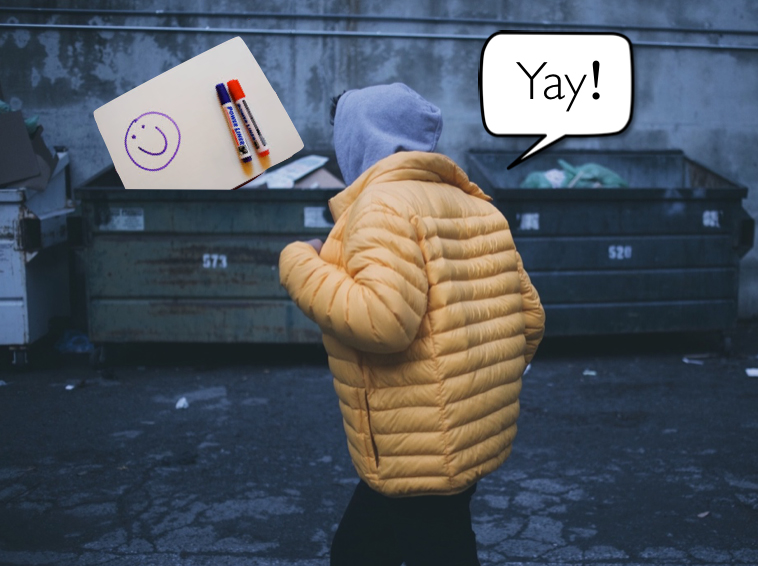
But here’s a tip . . .
When I need a change of scenery, I head to my local library and use the whiteboard that’s located in the private study room.
Keep a look out for whiteboards in your school, university or local library. I guarantee, you’ll start to see them everywhere. Don’t be afraid to use them (whiteboards are there to be used).
If you come prepared with your own set of whiteboard markers and a cloth eraser, you can get a quick whiteboard session in. At the end of the session, take a step back and look at what you’ve managed to accomplish. Notice if your whiteboard sessions leaves you feeling slightly better than before (I usually feel calmer and more in control).
Then take a quick snap with your phone so you can capture your ideas . . . before wiping all that mess away.
“He who knows he has enough is rich.”
So I’ve been experimenting with this idea. I’ve been flexing my thrift muscle and making do with what I already have.
When I was working on my PhD, I discovered how to feel rich without having a lot.
I came across a simple graph that changed the way I viewed the world: The Wundt Curve of Satisfaction.
This graph illustrates the relationship between satisfaction and stimulation from consumption. Let me explain how it works . . .
When consumption levels are relatively low, the satisfaction experienced is quite high. But there’s this point at the top of the curve where you feel totally satisfied with what you have (the comfort zone). Let’s call this point the Enough Point.
But once you go beyond the Enough Point, the returns start to diminish. As you purchase your 27th pair of shoes, you feel satisfied for about 30 seconds and then you think ‘meh!’. You don’t feel as excited as you did when you purchased your first and second pair of shoes.
So up to a point more is more, but beyond the Enough Point, more is less.
Because we live in a culture that encourages us to spend up big.
Advertisers bombard us with messages that tell us if we want to be happy and successful we need to consume stuff. And lots of it.
The job of advertisers is to construct a world that makes us want stuff that we don’t need. They tap into our desire to have more.
Advertisers also create new needs that may not have existed in us until the ad came along. Have you ever picked up an IKEA catalogue and suddenly you felt the need to have a new piece of furniture or a brand new study space?
You felt good about your life just a minute ago. But now you’re feeling dissatisfied? What’s with that?
In short, advertising can seriously mess with our minds, our happiness and our Enough Point.
It turns out the secret to happiness is simple. And it’s free (or very cheap). If you want to know what it is, read on!
According to Dr Timothy Miller if you want to be happy and content, then you need to start wanting what you already have. In other words, you need to find your Enough Point.
Over the last few months, I’ve created several new thrifty habits around saving money and appreciating what I have.
The following habits have helped me to reconnect to my Enough Point:
I discovered a great new place to eat at. It’s called The Kitchen. My home kitchen!
With a lot of my work being cancelled due to COVID-19, I had the time and energy to cook. So cook I did!
My husband and I have only ordered takeaway two times in the past eight weeks (Thai and Indian). This is a big deal as we’d usually get takeaway at least once a week.
By eating at home, it gave our taste buds a chance to reset (research shows that it takes 10 days for your taste bud cells to repopulate). We now appreciate the flavours of fresh produce and our cravings for take away have significantly decreased.
Estimated savings: $350
My husband Peter has always enjoyed growing vegetables in his spare time. But he ramped things up when COVID-19 hit. Every spare moment he had, he would be out in the garden planting vegetables!
I have to say, our garden looks amazing. But the best thing has been all the wonderful chemical free, nutrient dense produce!
Peter does 99% of the hard work in the garden. It’s my job to provide emotional support (“Great job! Keep going Pete!”) and turn the produce into delicious meals.
Estimated savings: $500
Every time I throw away food, I imagine I’m throwing away my hard earned money. It’s a painful thought!
But when you throw away food, it’s not only food and money that you waste. You waste all the resources that went into producing the food in the first place.
So I created a fun game to not let any food in my fridge and pantry go to waste. I tried to see how creative I could be with my cooking by shopping from my pantry and using up what I had (thereby avoiding going to the shops for as long as possible).
The old apples on the counter became apple crumble. The dried kidney beans became a chilli bean dish. The ripe bananas were turned into muffins.
Estimated saving: $200
Instead of signing up to Netflix, we use Kanopy. This is a collection of movies and documentaries that you can access for free if you have a library card. My local library also offers a Click and Collect service, so I order new books and pick them up once a week.
Estimated savings: $150
I had developed a bad habit of going op shopping for clothes every week. My desire for clothing was insatiable. I was addicted to finding a bargain.
Sure, you could argue it was just a bit of fun. I was only spending $5-$20 each time (hardly a fortune, right?). But I was doing it every week. Some serious coin was starting to add up.
I knew I had a problem.
So one afternoon, I went through my closet (piece by piece) and examined every item. Some items needed repairing. Others just needed a good iron. I soon realised I had more than enough clothing. It was time to start loving what I already had.
Whenever I now feel the urge to buy clothes, I repeat my mantra:
“Enough. I have enough.”
I also think about the new clothing item after it’s been worn a few times. I visualise it being tossed in the washing basket. I know from experience, it only takes a few days for the shine and novelty to wear off.
These strategies seem to have worked. It’s been two months and I haven’t purchased any clothing.
Estimated savings: $250
Instead of mindlessly shopping for clothes, I started learning new skills. I signed up to a couple of MOOCs (Massive open online courses).
MOOCs allow you to study at some of the best universities around the world (e.g. MIT, Stanford and Harvard) without leaving your home and spending a single cent. All you need is a computer, Internet connection, pen and paper and you’re good to go!
For an extensive collection of free MOOCs and reviews check out Class Central.
Estimated savings: $500
Physical movement is a big part of my life. It’s something I prioritise above everything else because it makes me feel, think and learn better. It also makes me a kinder, much more focused and disciplined person.
So before COVID-19 restrictions kicked in, I was happily spending $55 a week on a gym membership. I considered this a non negotiable expense. It was critical for my health and well-being.
But when the gym closed, I realised I could easily workout at home. I had collected a few bits of equipment over the years (e.g. dumbbells, stretch bands, and a yoga mat). With the help of a couple of fitness apps, I devised my own exercise program.
I also explored other (more fun) ways to exercise, including taking part in regular virtual dance parties with friends and going on bike rides.
Estimated savings: $450
It turns out you don’t need to have a lot of money or a big fancy house to feel rich. Why? Because freedom from desire is what makes you feel rich. It allows you to focus on things other than things: developing quality relationships, your intellect and new skills.
None of these things require material wealth. Just a curious mind and a willingness to learn (and make mistakes). As Art Buchwald once said:
“The best things in life aren’t things.”
I feel incredibly grateful for the life I have. So here’s to flexing our thrift muscles!
How do you flex your thrift muscle? Is there anything you do to save money? Feel free to share your tips below.
Dr Jane Genovese delivers interactive sessions on learning to learn, combating procrastination, exam preparation, how to focus in the age of distraction, habit formation and much, much more!
Get FREE study and life strategies by signing up to our newsletter:
© 2024 Learning Fundamentals